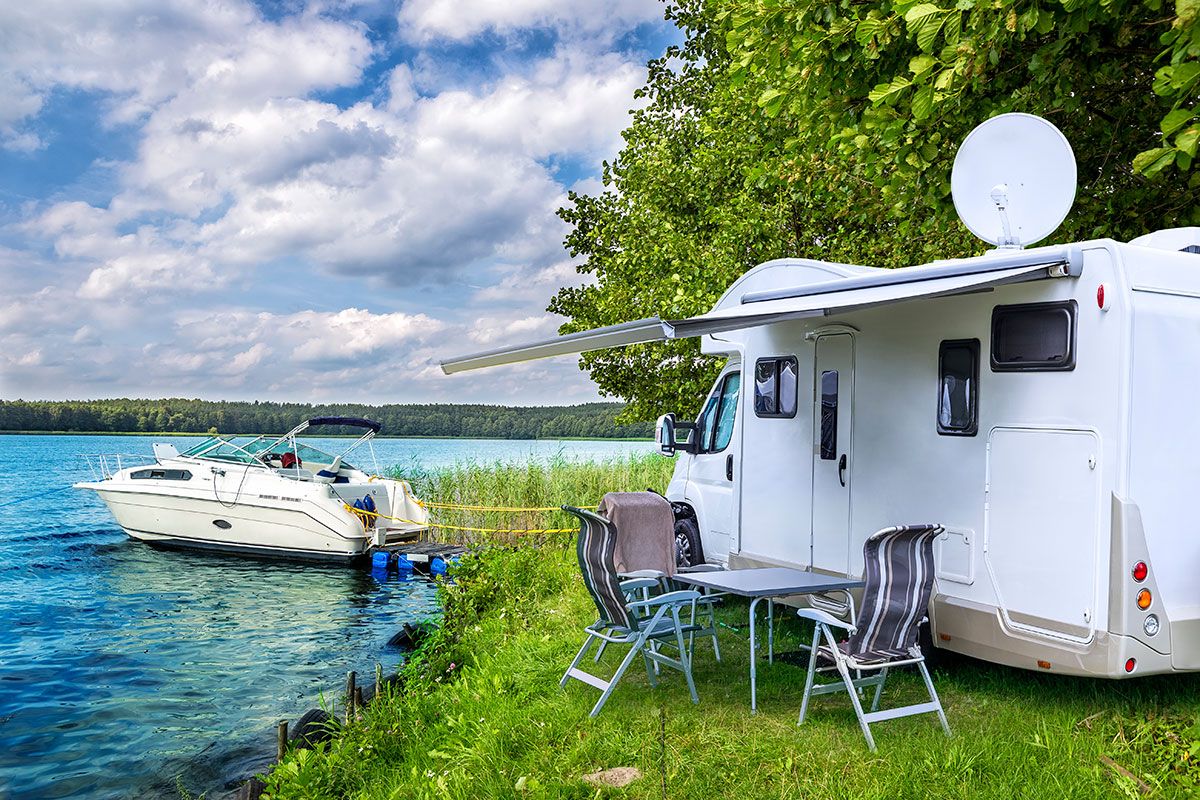You may have noticed that there are many different models of RVs on the road, and most of these motorhomes fall into 3 main classes: Class A, class B, and class C. While these three classes of RV share many of the same main amenities and features, there are some key differences amongst them. In this post, we wanted to break down some of these characteristics to help give you a better understanding of the difference between RV classes.

What’s the Difference Between RV Classes?
Class A
Class A vehicles are the largest of the 3 RV classes, and probably the first thing that comes to mind when you hear the word “motorhome.” These exceptionally large vehicles are definitely best for long-haul journeys, as they are large enough to comfortably fit all of the amenities that you’ll need to feel at home on the road as well as some luxury items such as king-sized beds and flat-screen TVs. Class A RVs come in two models: gas and diesel. Gas-powered RVs are generally smaller and have less hauling power than their diesel counterparts, but typically come at a better price range (and are cheaper to refuel). Because of their considerable size and power, class A RVs are more difficult to handle than a typical car or truck, and may take some getting used to. Make sure that you have a good place to store your class A RV ahead of your purchase, as many neighborhoods require permits in order to park a class A RV on a residential street. In addition to neighborhood permits, you should also be aware that many campsites also have RV length and height limits that you must adhere to.
Class B
Class B RVs are the most compact of the 3 motorhome classes. From the outside, this RV almost looks like a typical van, and this is for a good reason. Many Class B RVs started their lives as full-sized vans. With modifications to the roof, doors, and interior, these vans are transformed into bona fide motorhomes. These compact vehicles come equipped with all of the amenities that you would expect from a motorhome, including a bathroom, kitchen area, bed, and storage space. Because of their compact size, class B RVs are easy to handle and will comfortably fit into most driveways. However, their small size also means that living space is tight and may not be very comfortable for large families or long journeys. For these reasons, Class B RVs are best suited for weekend getaways and short camping trips.

Class C
Class C RVs are larger than class B motorhomes, but smaller than class A motorhomes. These RVs are instantly recognizable by their pickup-truck style cab and RV body. Because of the extra power provided by the pickup-truck chassis of class C RVs, these motorhomes are able to have larger interiors and carry more amenities than class B vehicles, but at a similar price range. Some RV owners prefer class C vehicles over class A vehicles due to their easier handling, cheaper price, and better mileage. They are also roomier and have more storage space than class B RVs. However, you should keep in mind that class C vehicles also have much larger bodies than class B RVs, meaning that you may run into storage and access issues similar to the class A RVs.
Now that you have a better understanding of the difference between RV classes you can now more readily identify what type of RV is the right fit for your adventure needs. Once you know what RV is the right one for you and your family, you might want to check out some of the many RV adventure spots that Florida has to offer. Some of the most popular and arguably best RV resorts in Florida include:
- Perdido Key RV Resort
- Fort Myers RV Resort
- Fiesta Key Resort
- BlueWater Key (Key West RV Resort)


